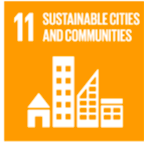Paper Trails - The Project
In the introduction to Industrial Heritage Re-tooled: the TICCIH guide to Industrial Heritage Conservation, James Douet asserts that industrial remains are amongst the “‘cultural goods’ that modern societies aim to sustain for their future well-being” for their abundance, versatility as well as for their economic and educational potentials. It is, then, no wonder that “[a]dapting and repurposing them are now mainstream strategies for urban planners”. More so when hard hit communities by deindustrialization benefit from large-scale refurbishments as demonstrated by former industrial complexes such as the Zollverein Coal Mining complex (Essen, Germany), the Engelsberg Ironworks (Norberg, Sweden) or the Liverpool - Maritime Mercantile City (UK), the weaving and textile company Companhia de Fiação e Tecidos Lisbonense now known as LX Factory (Lisbon, Portugal) a compound popular for its shopping and eating out options as well as for its office spaces, to mention but a few. Post-industrial landscapes such as the ones mentioned go beyond mere urban marketing strategies, as they aim not only at promoting a new image of the place but also at prompting changes in governance and urban development.
While Tomar was once one of Portugal’s most prominent industrial nodes, the vast majority of its industrial and pre-industrial units are now either ruins of a recent productive past or under imminent threat of closing, as the municipality’s industrial zenith is long gone. An example of that is the municipality’s iconic paper producing compound, which is made up of the following industrial units: Companhia de Papel do Prado, Fábrica de Papel de Porto Cavaleiros, Fábrica de Papel da Matrena, Fábrica de Papel do Sobreirinho and Fábrica de Papel de Marianaia. Despite, and somehow because of, their current material decay, the buildings are considered as heritage and cultural assets made up of noteworthy local identity features as they have overtly contributed to Tomar’s former prestige position while feeding a certain nostalgic sense of community.
Conscious of the important role the paper industry played in the region and wishing to establish a dialogue with École de Design et Haute École d’Art du Valais’s (EDHEA) work on artistic production in active factories and post-industrial settings (including Swiss reconversions of industrial architectures into cultural activities and Olivetti’s Typing machine factories cultural/industrial production processes in Ivrea - Italy), the event will be centered on the paper industry, in both its industrial and cultural facets.
Thus, the main goals of this project are:
- to provide an overview of Tomar’s industrial heritage state so that all involved, be they Portuguese or Swiss, academics, artists, local government representatives, local communities or general public, get acquainted with the broad picture and may contribute to its understanding and analysis;
- to assess the impact and viability of adopting a strategy of artistic reconversion of former industrial sites (both in terms of heritage and practices) in a comparative fashion, both in transdisciplinary and geographical terms;
- to collect official and informal histories from institutional, political and personal archives as well as former blue- and white-collar workers’ histories and collective memories of the factories, by means of a documentary film;
- to screen a documentary film resulting from EDHEA’s project Art Work(ers) so as to establish a dialogue between the two realities depicted;
- to bridge the gap between the city’s past and the present by resorting to a Creative Conservation approach, as a way to start speculating into the future in shared expertise with EDHEA;
- to explore the chosen topic by resorting to a combination of perspectives usually considered to be incompatible, such as the technical/industrial and artistic);
- to contribute to “landscape management in the context of sustainability” and “to foster positive change”, as established by IPT’s UNESCO Chair for the Humanities and Cultural Integrated Landscape Management; and following the same logic - to comply with the goal - Sustainable Cities and Communities -- of the United Nations 2030 Agenda for Sustainable Development;
- to develop an experimental joint and semester-long online course
In terms of societal results, we expect to raise awareness to the empowering potential of industrial heritage by displaying similar situations in which obsolete infrastructures were reconverted and given a new life. Also, we intend to use cinema to instill pride into former industrial workers by giving them the lead role.
Source: Douet, J. (Ed.). (2013). Industrial heritage re-tooled: The TICCIH guide to industrial heritage conservation. Left Coast Press.



